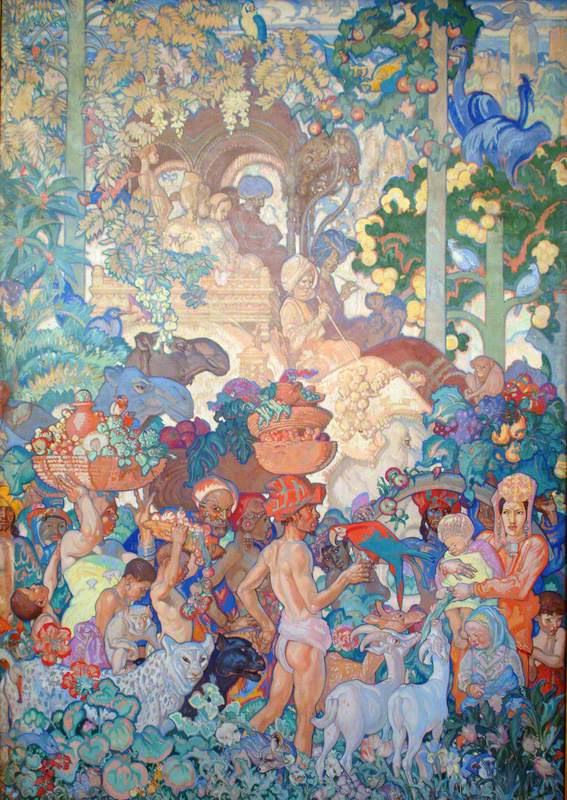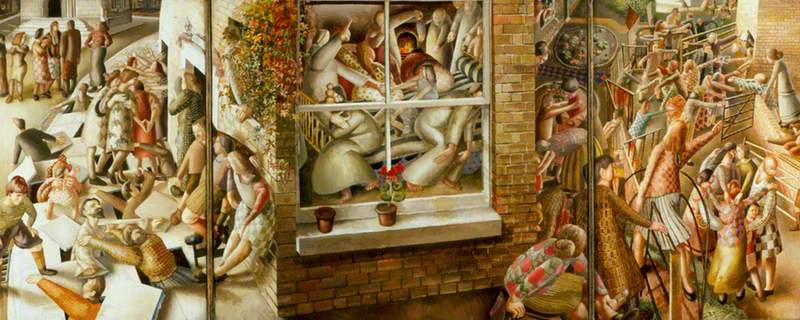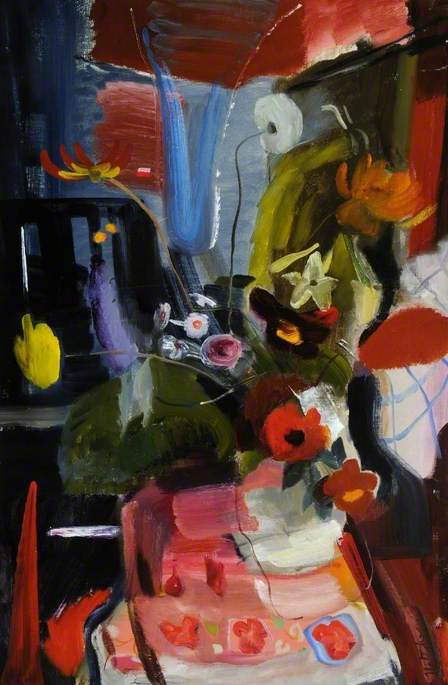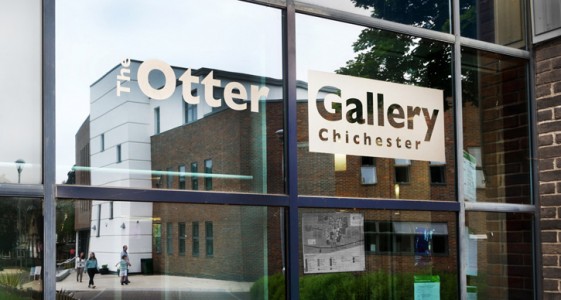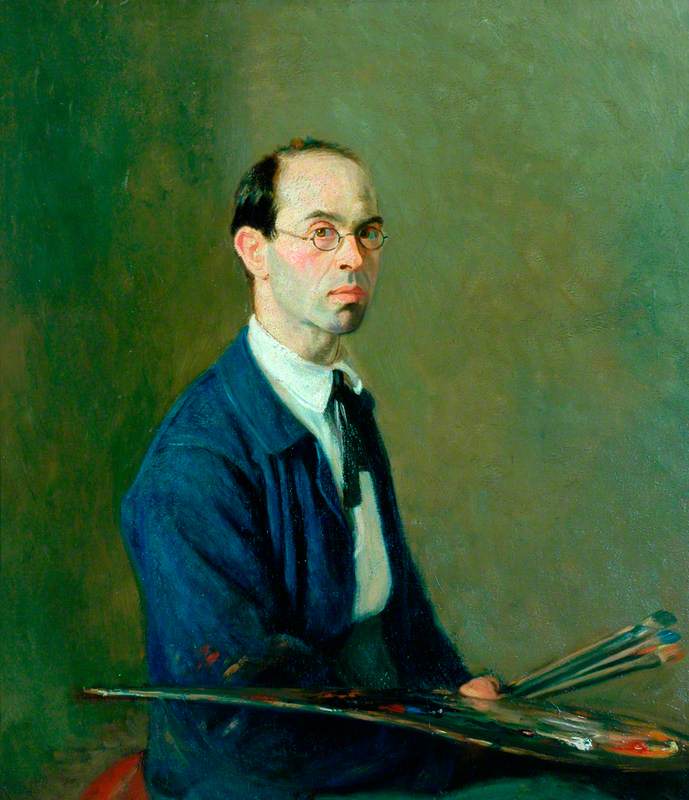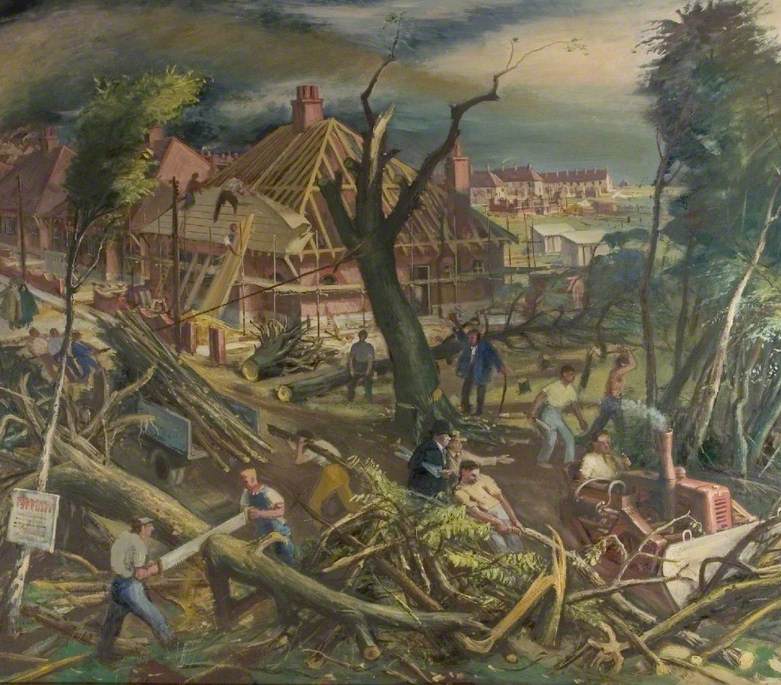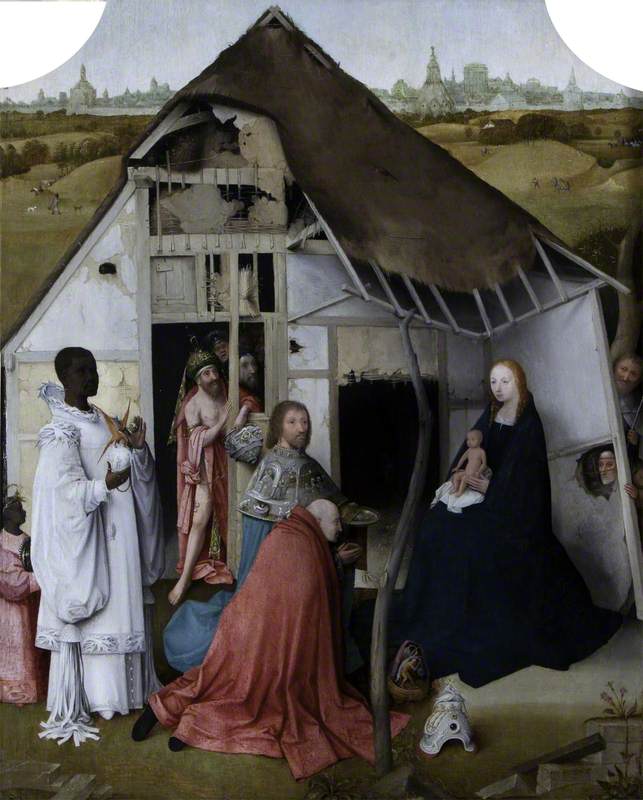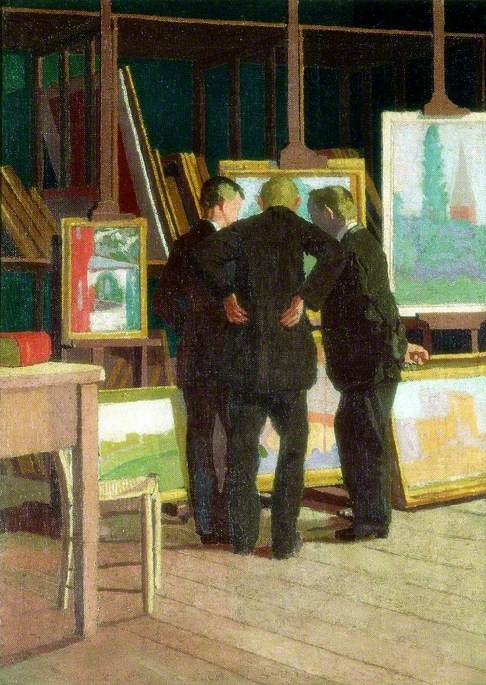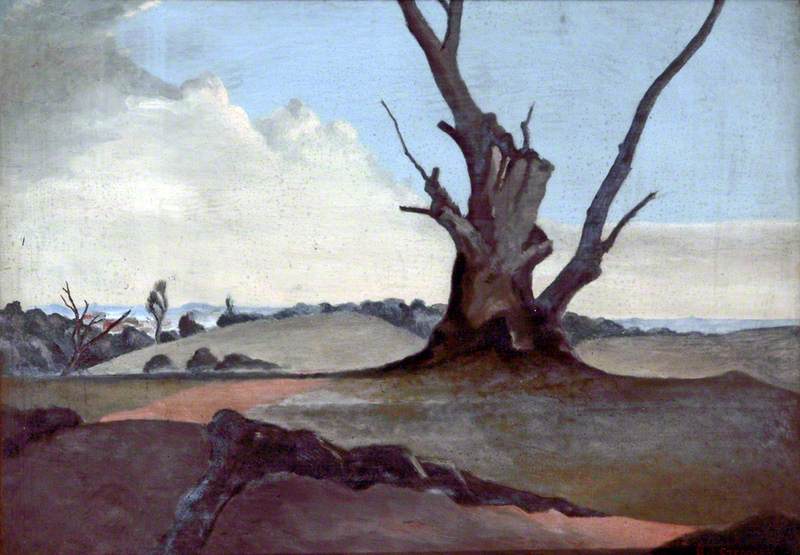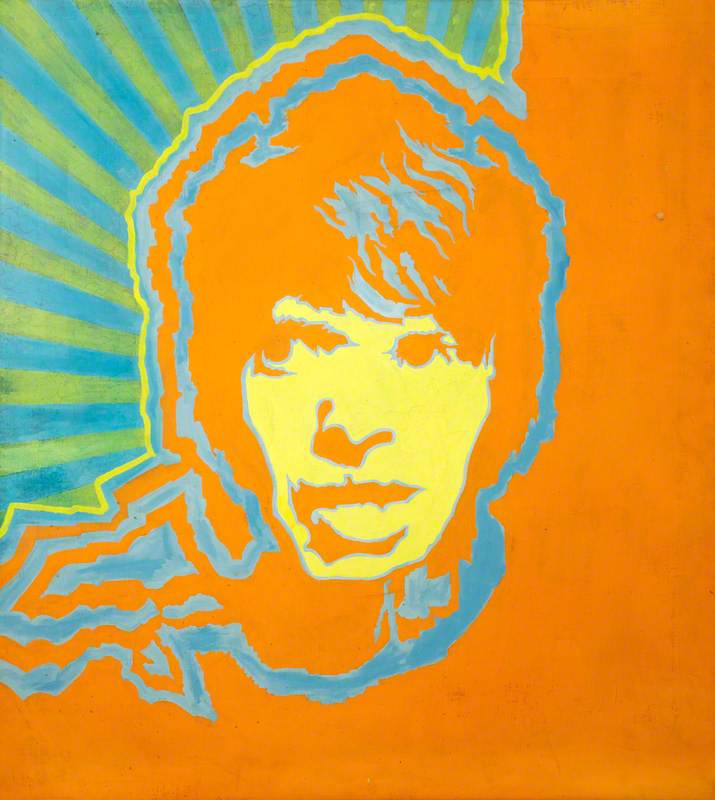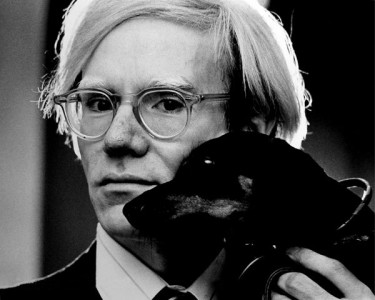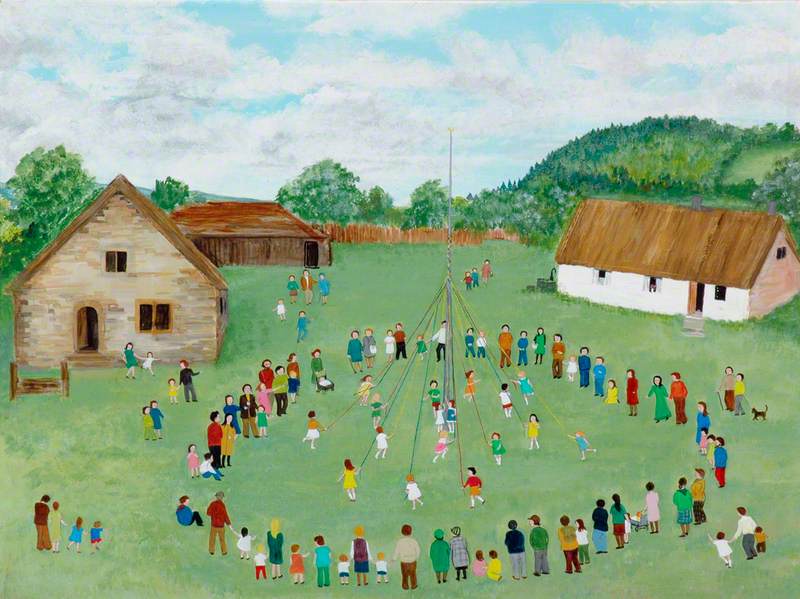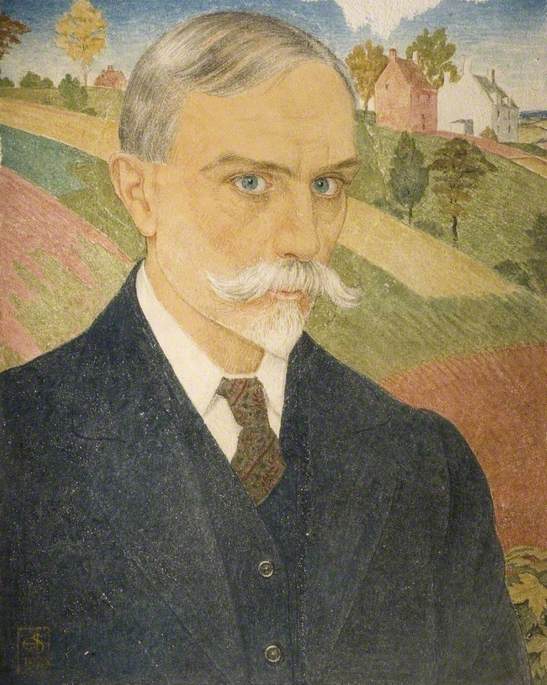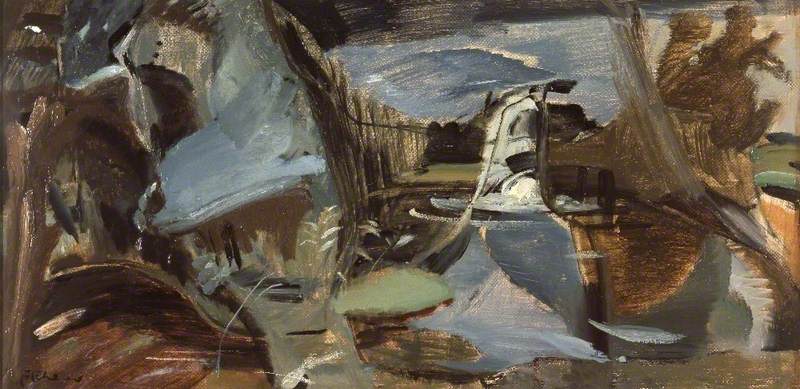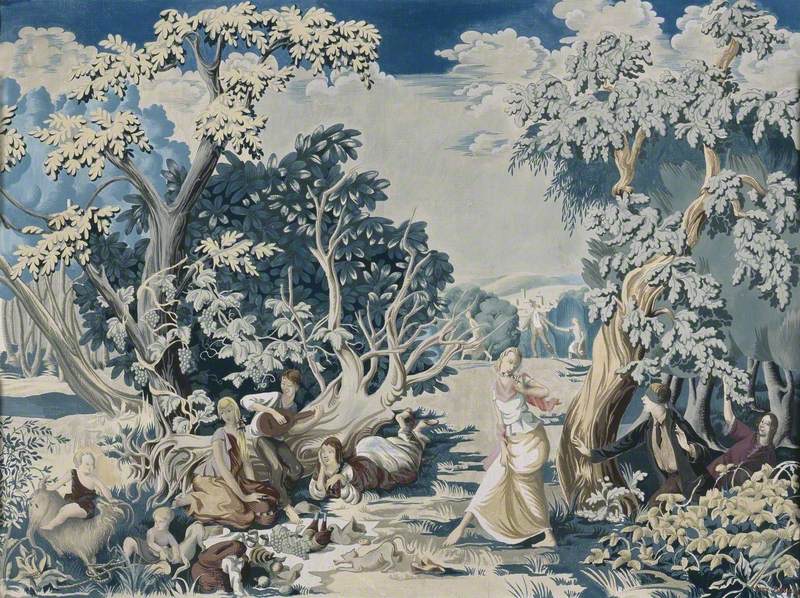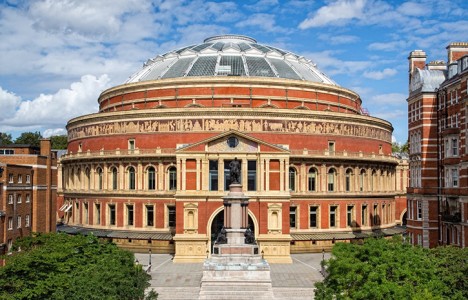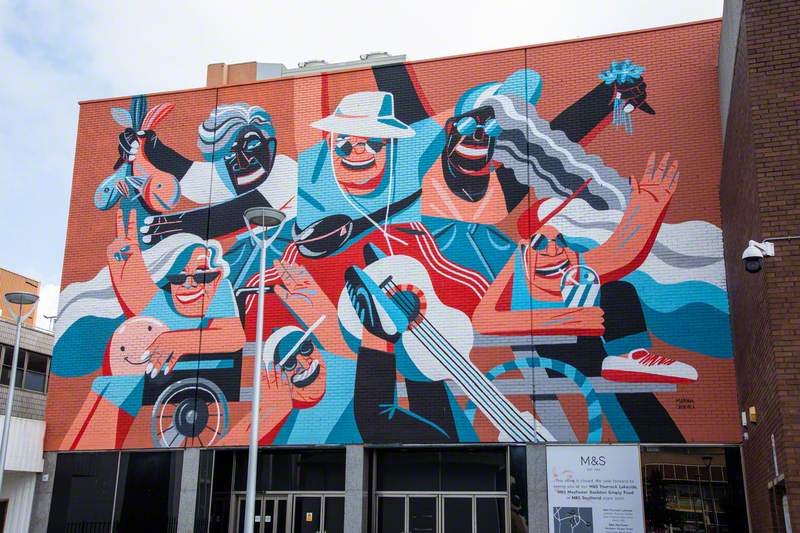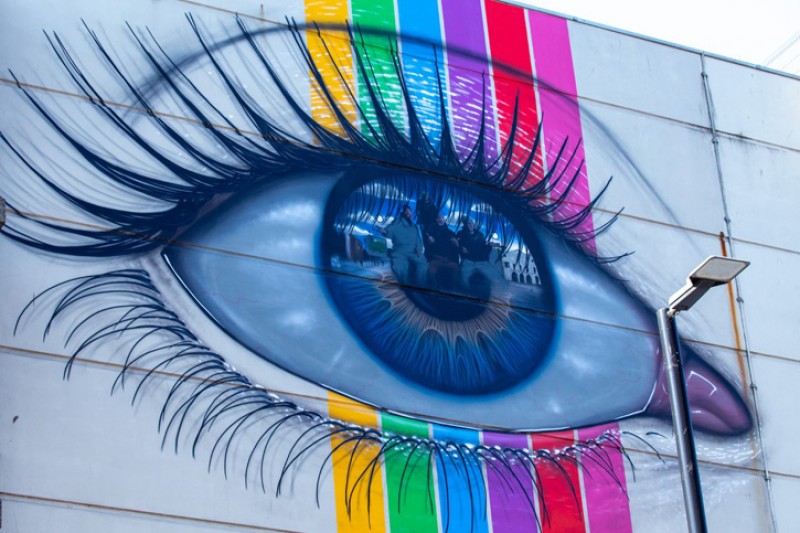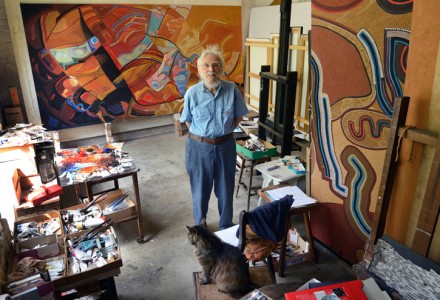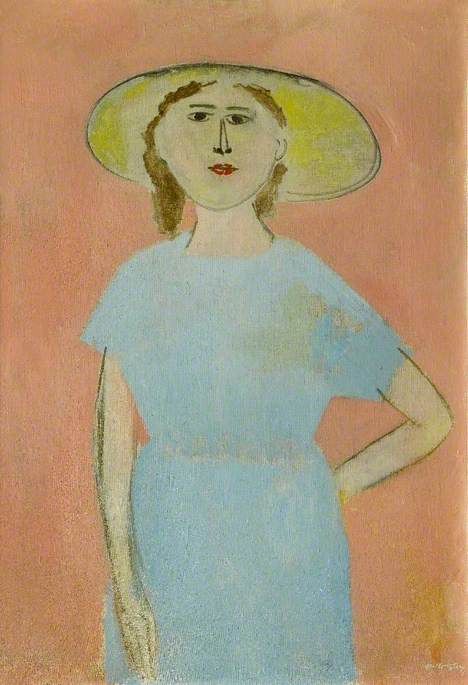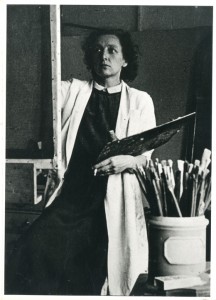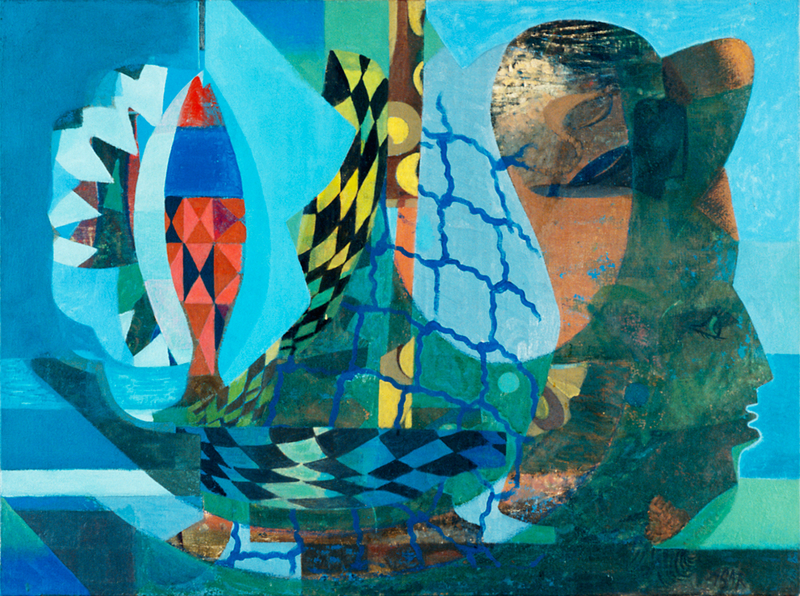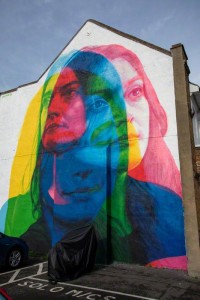Measuring 6 metres by 21 metres, the Ivon Hitchens mural in Cecil Sharp House was the largest in the country at the time of its unveiling and has been a key feature ever since.
Cecil Sharp House was built in 1929 for the English Folk Dance Society, which amalgamated with the Folk-Song Society in 1932 to become the EFDSS. A key feature of the original building was the elevated musicians' gallery in the main hall (now Kennedy Hall). However, when the building was bombed during the Second World War, the gallery was destroyed. When Cecil Sharp House was rebuilt after the war, the gallery was not reconstructed as, though decorative, it had proved impractical for performances. Instead, the Society decided on a mural to decorate the hall and Ivon Hitchens was commissioned to execute the piece in 1951. He worked on it for over three years before it was finally installed in 1954.
The mural was intended to depict key English folk-dances and traditions, and Ivon Hitchens planned the composition carefully to be in keeping with the spirit of the Society and to sit naturally within the hall, with dances and performances taking place beneath it. He wanted to place his figures in a woodland setting, 'to act as a foil to the urban surroundings of Cecil Sharp House'.
The scene depicted is 'a mythical wood' with various figures taking part in dancing (on the left of the frame). Three musicians (top centre) provide music for the dancing. To the right of the picture can be seen Horn Dancers, probably based upon the Abbots Bromley horn dancing tradition and a 'Queen of the May' mounted on horseback. On the far right a Hobby Horse figure, modelled on the Padstow 'Obby 'Oss, 'is lured forward by its Teaser to take part in the proceedings'.
Ivon Hitchens (1893–1979) was an artist primarily concerned with colour, form and composition in his paintings, and chiefly inspired by the landscape and nature of England. He lived and worked for most of his career in West Sussex, at first living in a caravan in a patch of woodland, where he often painted directly from nature. Hitchens represented Britain at the 1956 Venice Biennale and his paintings are held in many major collections including at Tate.
Lucy Ellis, Former Art UK Paintings Project Coordinator


